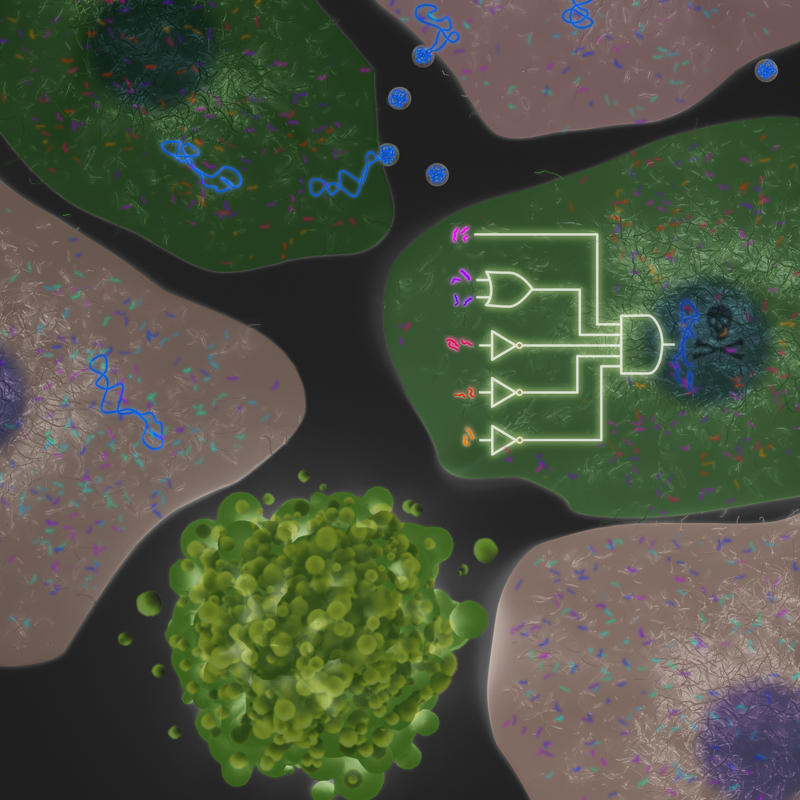A new study, published in Science, describes a multi-gene synthetic circuit that can distinguish between cancer and non-cancer cells, after which it can target the cancer cells for destruction. Through recognizing five intracellular cancer-specific molecules, the circuit is able to accurately identify cancer cells, which, after detection, are destroyed.
Finding the right combination of molecules was challenging. Looking among microRNA molecules, which are post-transcriptional regulators, the researchers were eventually able to find one miRNA combination that was typical for HeLa, or cervical cancer, cells. The combination is made up out of five specific miRNAs, and is sufficient to identify HeLA cells among healthy cells (see figure 1).

Figure 1: The circuit requires all five molecules as input before triggering cell death.
(Credit: Benenson, Y. and Weiss, R.)
These miRNAs are subjected to Boolean operations in the cell in which they are detected, and when the entire calculation results in a logical TRUE value, cell death is triggered. The researchers were able to demonstrate that this works reliably in living cells.
The next step are animal studies, with the aim of building diagnostic and therapeutic tools in the future. But before that, there are still issues to be solved. For example, the introduction of foreign DNA into a cell safely and efficiently, certainly since this approach requires a temporary rather than a permanent introduction of foreign DNA into the cell.
In the words of one of the authors:
We are still very far from a fully functional treatment method for humans. This work, however, is an important first step that demonstrates feasibility of such a selective diagnostic method at a single cell level.
Reference
Xie, Z.; Wroblewska, L.; Prochazka,L.; Weiss, R. and Benenson, Y. (2011). Multi-Input RNAi-Based Logic Circuit for Identification of Specific Cancer Cells. Science. 333(6047), pp. 1307 – 1311. doi:10.1126/science.1205527.




Comments